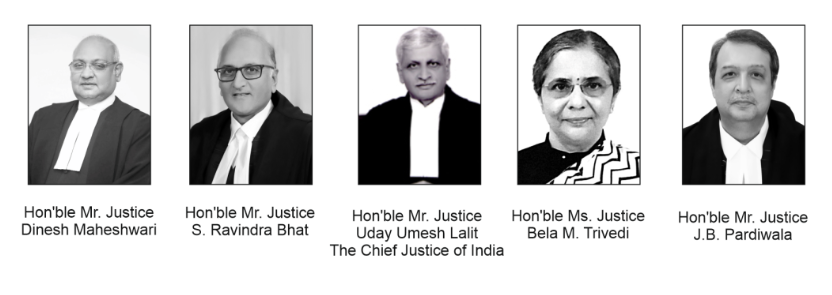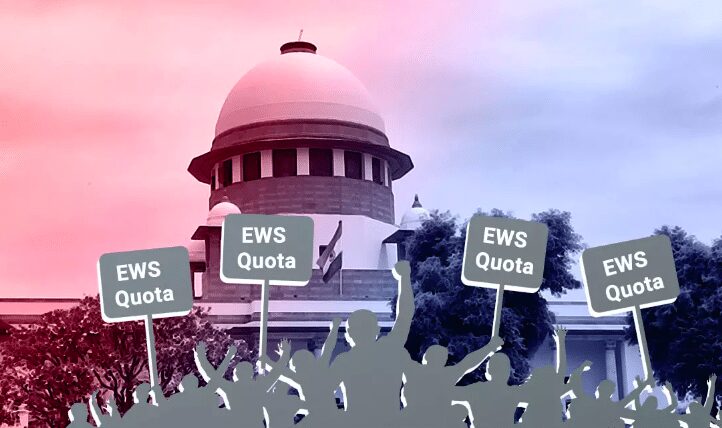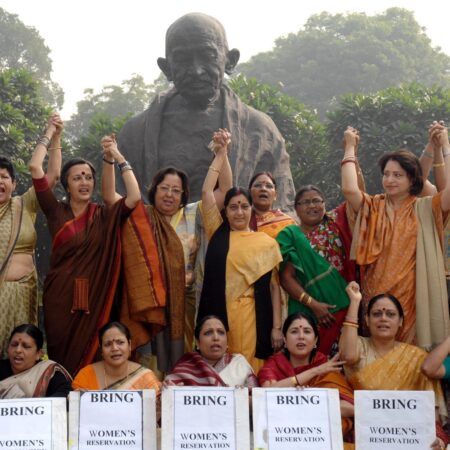The 103rd Constitutional Amendment Act’s legality was confirmed by the Supreme Court of India’s five-judge bench by a 3:2 margin.

A reservation is occasionally requested by one community or another, but some towns object because they believe it will hinder their development and that the reservation should not be expanded.
Reservation in India?
Reservation is seen as a constructive activity to improve the lot of disadvantaged people. It is a means of giving everyone equal standing and access to opportunities. People who are “socially and educationally marginalised” are eligible for reservation, according to the Indian Constitution.
The idea of reservation is not new to India; it was one of the topics of discussion before the country gained its independence, and at first after it, it was restricted to the representation of Scheduled Castes and Scheduled tribes in Parliament. In 1982, reservations in educational institutions with government funding and jobs in public-sector organisations were made available to SC and STs.
However, Other Backward Classes were also included in the 27% reservation. The Morarji Desai government established the Second Backward Classes Commission in 1979 under the leadership of B.P. Mandal to revise Article 340 of the Indian Constitution, which permits the improvement of the social and educational conditions of backward classes. Around 52% of Indians, excluding SCs and STs, are marginalised, according to the Commission’s 1980 report, which proposed 27% reservation in government jobs and educational institutions. The 50% limit criterion in the Constitution, which is also a part of its Basic Structure, was taken into consideration when this 27% reservation was proposed.
The OBC reservation law was passed by the V.P. Singh government in 1990, and in 1992, the Narasimha Rao government added Article 16(4) to the Indian Constitution and mandated that the 27% OBC reservation be supplied on an economic basis, meaning that only those who are destitute will be eligible. A 10% reservation for the impoverished in the higher caste society was also something the Narasimhan Government intended to implement at the time, but the Supreme Court rejected it since it was unconstitutional.
The Reservation was then expanded in the promotions and open positions in the backlog.
The 103rd Constitutional Amendment Act: What Is It?
The 103rd CAA, which was passed in 2019, allocates 10% of seats to the Higher Caste’s poorer subgroup. Economically Weaker Sections are eligible to use it, although SC, ST, and OBCs are not included.

Eligibility Criteria for defining Economically and Weaker Sections-
- EWS reservation is available to people whose gross annual family income is less than Rs. Any source, including a salary, a business, agriculture, etc., will provide this money.
- No one who owns (a) 5 acres or more of agricultural land, (b) a residential flat larger than 1000 square feet, (c) a residential plot larger than 100 square yards in notified municipalities, or larger than 200 square yards in areas outside notified municipalities, regardless of his or her or their family’s income, is eligible to receive the reservation benefit.
The Provisions Added by Amendment to the Indian Constitution?
The Constitution now includes Articles 15(6) and 16(6) as a result of the Amendment.
According to Article 15(6), the State is authorized to provide special measures for the advancement of EWS, and 10% of places in educational institutions, both with and without government assistance, are set aside for their admittance. Minority educational institutions are the exception to this rule.
The State may reserve 10% of positions or nominations for Sections with Weaker Economic Positions under Article 16.6.
What was the legal basis for the challenge?
It was contested on the grounds that the Act violates the “Basic Structure” of the Constitution, which was established in 1973 by the historic Kesavananda Bharati Case verdict, according to which some provisions of the Constitution are inviolable and untouchable.
According to this argument, the constitution does not only identify economic protection as a factor for reservations; socially disadvantaged individuals also receive particular protection.
The 50% ceiling limit that was imposed in 1992 by the Indra Sawhney Judgment is another point of contention. And for this reason, the Higher Courts have on numerous occasions rejected the reservations that many governments sought for particular groups.
The Verdict Gave by the Bench?
The verdict was 3:2, meaning that three judges favoured the 103rd CAA’s legality while two judges were on the minority side.

The supporters of the Act argued that the “Amendment does not violate the Basic Structure phenomenon and excluding SC and ST from Article 15(6) and 16(6) does not go against the will of the Constitution and Treating EWS as a separate class is a reasonable Classification and it is time to revisit the reservation for the greater good of society,” according to LiveLaw. “Reservation is not an aim, it is a means, and it should not be permitted to become a vested interest,” said another judge.
The argument made by those opposed to the amendment was that, while omitting SC and ST does violate the Constitution, reservations based on economic status do not. The Act was deemed discriminatory and in violation of the Equality Code by the judge.
Read More: India claims that oil deals with Russia are beneficial, as Yellen visits Delhi













